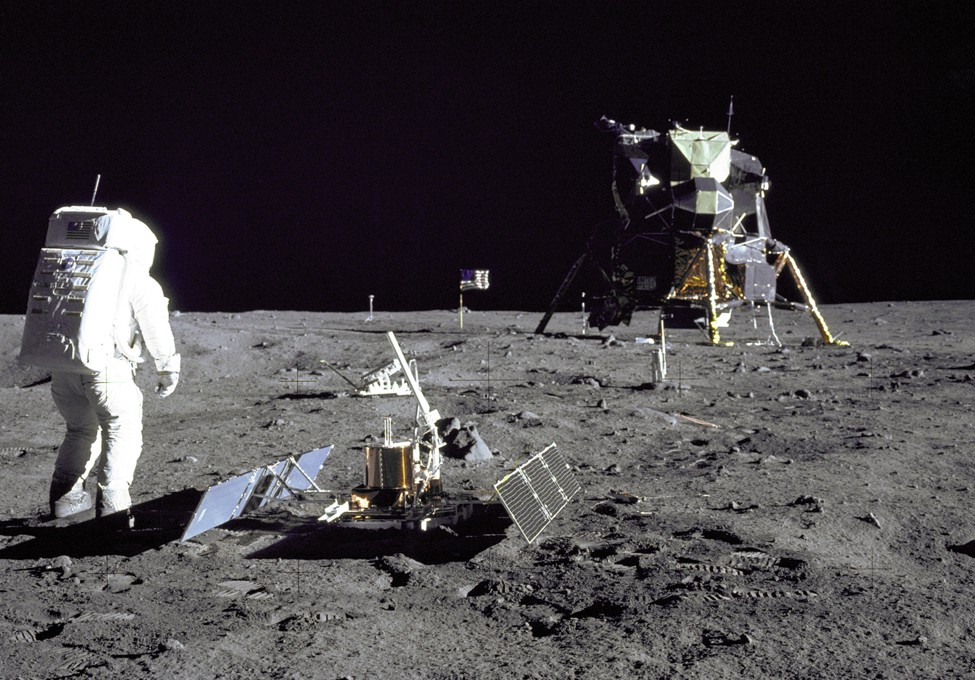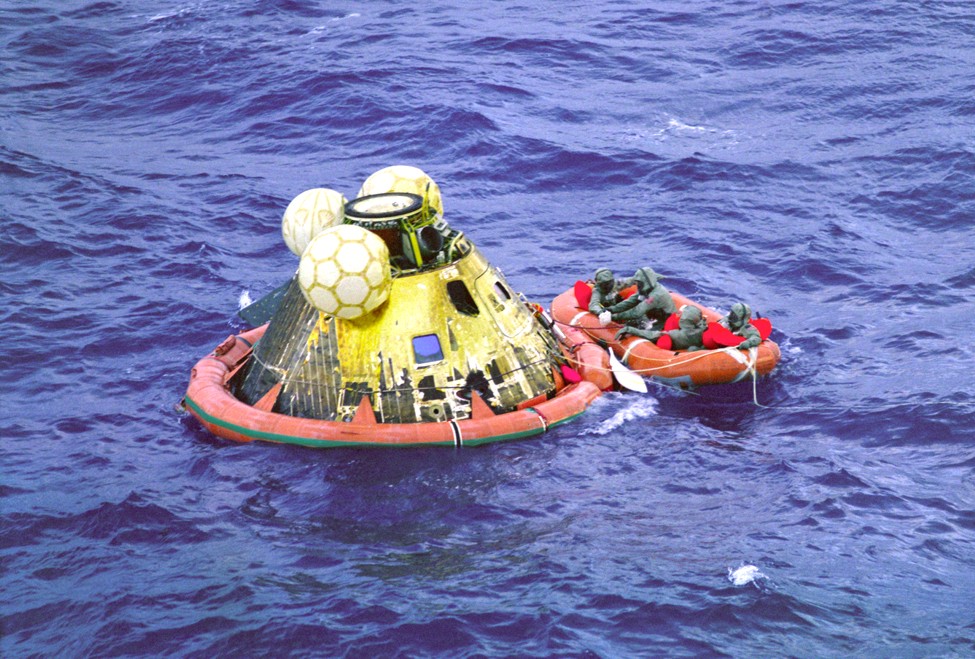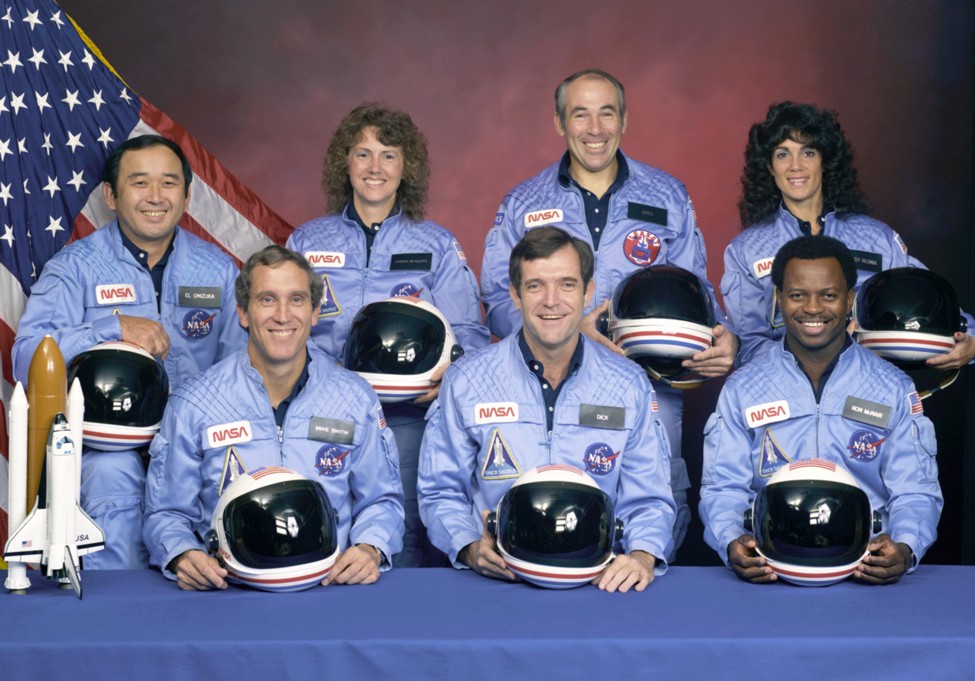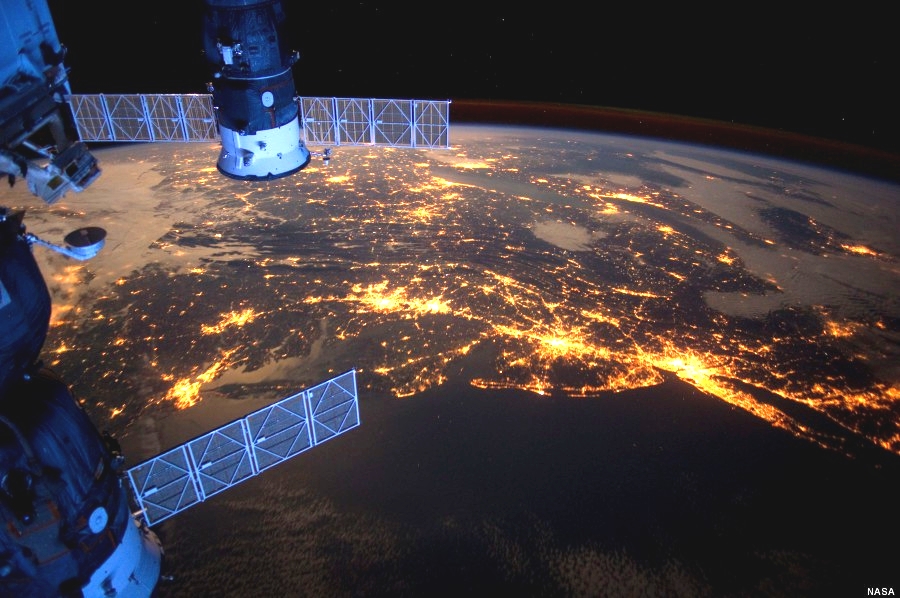Apollo 11 - The first Moon landing - 1969
Below: The giant Saturn 5 rocket blasts off from the
Cape Kennedy launch center in Florida on July 16, 1969.
The crew of the Apollo 11 mission, from left to right:
Neil Armstrong, Michael Collins, and Edwin "Buzz" Aldrin.
Neil Armstrong and Buzz Aldrin landed on the moon four days
after the launch. The photo shows the moon lander, called the Eagle.
It was on the surface a little less than one day. Michael Collins
remained in the Apollo 11 capsule in orbit around the moon.

Buzz Aldrin (below) and Neil Armstrong were out walking
on the surface of the moon for a total of about two and a half hours.
There is no air on the moon, so the American flag (below)
was held out by a piece of wire for this photo.
Eight days after the launch, the crew was back on Earth.
The landing was made in the Pacific Ocean. (All of the
early space voyages landed in water for safety and ease
of recovery.) Navy ships were positioned in the expected
landing zone to pick up the astronauts and spacecraft.

The Space Shuttle Challenger Disaster
The exploration of space carried risks. The entire crew (below)
of the Space Shuttle Challenger was lost when the spacecraft
broke apart only a minute or so after its launch in 1986.
On the flight was Christa McAuliffe, a high school social
studies teacher who was selected to fly with the mission and
teach a lesson from space. (Back row, second from the left.)

The view from the
International Space Station
Below: The East coast of the United States, as
seen at night from the International Space Station.
North is to the right in this photo.
Find the bright lights of New York City and Long Island on the right.
Moving to the left, the brightest areas spaced along Interstate 95 are:
Philadelphia, Baltimore, Washington, D.C., and Richmond,
Virginia. At the lower left are the cities of
Newport News, Hampton, and Norfolk, Virginia.
